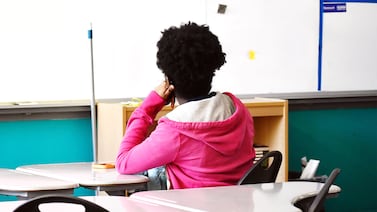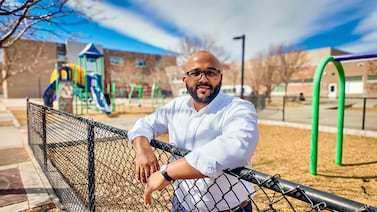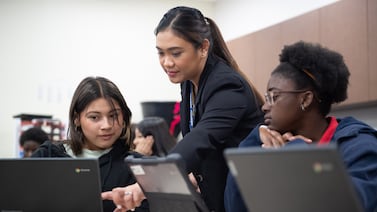This is part of an ongoing collaborative series between Chalkbeat and THE CITY investigating learning differences, special education and other education challenges in city schools.
The crowning achievement of former Mayor Bill de Blasio’s administration is uncontested: universal pre-K.
The program guarantees free pre-K for 4-year-olds and has grown to include 3-year-olds in a dozen districts with plans to expand citywide.
But the city’s preschool programming has poorly served many students with disabilities, according to an analysis of 2019-2020 city data released Thursday by the nonprofit Advocates for Children.
The analysis is based on a first-of-its-kind trove of city data that is now required to be released annually under city law. It offers one of the most comprehensive windows yet into how well the city’s more than 30,000 preschool students with disabilities are being served, including patterns that correlate strongly with race and geography.
Among the findings: Black and Asian preschool students were less likely to be identified for services than their white peers. When Black and Latino students were identified for services, they were more likely to be funneled to segregated classrooms that only serve students with disabilities.
And roughly a third of preschool students weren’t receiving all of their legally mandated services. (Some of the figures may have been impacted by the pandemic, but because this is the first time the city has released much of this data, historical comparisons are not yet possible.)
“Children are missing out on special education services at a time when you can really have the most impact on their development and education,” said Betty Baez Melo, an early childhood education expert at Advocates for Children.
Department of Education officials pointed to a $22 million investment in special education allocated by the prior administration for preschool special education as a means to add seats, bolster services, and expand inclusive classroom settings.
“We know more needs to be done, and will work with Advocates for Children and families to ensure all students have access to a strong start and the services they need,” said DOE spokesperson Sarah Casasnovas.
Here are four takeaways from the new report:
1: Black and Asian students were less likely to be identified for preschool special education services compared with white students.
White students represented fewer than 20% of all pre-K students but more than 37% of those receiving special education services. Asian and Black students were both underrepresented compared with their share of the population, while the share of Latino students was nearly proportionate.
Those patterns are consistent with Early Intervention services for children from birth to age 3, but the reverse of trends in the city’s K-12 classrooms, where Black and Latino students tend to be overrepresented in special education. (Asian students are underrepresented in both special education preschool and school-age classrooms.)
There is significant debate about whether students of color are over- or under-identified as needing special education services. The Advocates for Children report does not definitively explain the racial differences at the preschool level, but experts and advocates point to several possibilities.
Getting special education services in preschool can be a time-consuming process that could disadvantage families who don’t have lots of time or resources. And unlike K-12 students, who may be identified for services by their teachers, preschoolers are not yet required to attend school, meaning more of the onus to seek special education services falls on parents.
Flatbush dad David Harrington said his family advocated for their son, August, at every step of the special education process, which was often confusing and beset by delays.
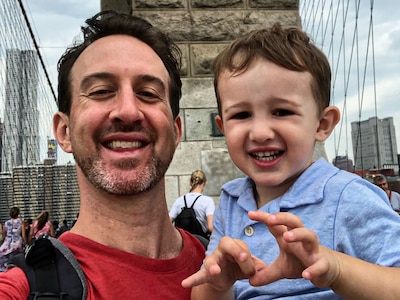
It took roughly five months after requesting an evaluation in December 2020 to hash out an Individualized Education Program that addressed August’s sensory needs, growing dislike of school, and habit of hitting himself when upset.
Even after August’s IEP was created, the family was told that the occupational therapy and one-on-one special education teacher promised on the learning plan weren’t available. August’s parents, who both work in education-related fields, ended up finding service providers themselves, likening the process to a “part-time job.”
Harrington, who is white, wasn’t surprised that white families were overrepresented in obtaining services.
“If the system requires that families carry the burden of the entire referral and enrollment process, then it is biased towards those with more flexible work schedules, experience making bureaucracies work in their favor, social networks that help them access specialized knowledge and relationships, and enough income to pay for expensive assistance,” Harrington wrote in a message.
“In Brooklyn and throughout NYC, those privileges are more likely to accrue inequitably to white families.”
2: Black and Latino students were more likely to be referred to segregated preschool classrooms that serve only special education students.
A majority of Black and Latino students with IEPs were referred to special education-only classrooms, while nearly half of Asian students with disabilities were as well. This compares to about 30% of white students with IEPs who were recommended for classes segregated from general education students.
Advocates for Children staffers said the trend of putting students of color in more segregated classrooms mirrors what’s happening in the older grades.
At the preschool level, though a lower number of Black and Asian students are identified for special education services, the children who are referred for services may have higher needs, requiring more intensive support.
For preschoolers with disabilities, it’s considered less restrictive to have them work with a traveling instructor known as a SEIT (special education itinerant teacher) in a general education classroom. Barely one in 10 Latino students with IEPs were referred for such services, while the rate for white students with disabilities was more than one in three.
Part of this may be because of geographical variations, including a longstanding shortage of SEIT providers in the Bronx, which may mean students are being placed based on availability of services rather than on the students’ needs.
When it comes to segregated classrooms, about 60% of preschoolers with disabilities in the Bronx were recommended for classes that serve only students with disabilities compared to nearly 31% in Brooklyn.
On the flip side, only 4% of Bronx preschool students were recommended for SEIT services compared to 37% in Brooklyn. Those differences were even starker across certain districts, the report found. Less than 3% of preschoolers with IEPs were recommended for SEIT services in District 9, spanning the South Bronx, whereas about 54% of preschoolers in South Brooklyn’s District 21 were referred for such support.
“Unfortunately, we do see trends where providers are unwilling or hesitant to travel to specific neighborhoods,” said Baez Melo. “The DOE needs to ensure that there are enough providers to work with all students to provide the services that are mandated.”
3: One in three preschool students with disabilities didn’t get all of their mandated services.
About 34% of preschool students with disabilities did not receive the services listed on their IEPs by the end of the 2019-2020 school year — meaning over 10,300 students were not in the appropriate special education classroom setting or weren’t provided with other services, such as speech or occupational therapy.
As New York City has struggled to provide enough preschool special education seats to families who are legally entitled to them, more than 1,500 students were not offered a seat in the correct classroom setting by the end of the school year, a situation that leads to many families simply keeping their children at home.
Four-year-old Devyn Maiga, of the Bronx, was among those who remained home for months last school year.
His mom, Dilia Tejeda, said that Devyn was eligible to start preschool in December 2020, but because of a shortage of special education seats, he wasn’t assigned to a classroom at the Children’s Learning Center in Harlem until March 2021.
“I did his IEP meeting early, so there was no reason why my son couldn’t go to school early if I did everything on time,” said Tejeda, 23. “The problem is they didn’t have a seat, and there was a lot of negligence.”
Tejeda said she couldn’t get DOE officials to return her calls for months about placing Devyn in a class with 12 students, as was outlined on his Individualized Education Program.
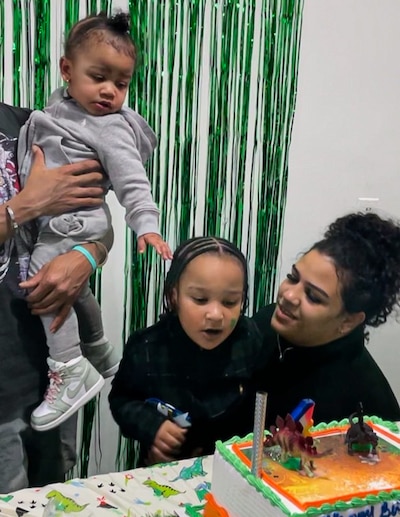
Through Advocates for Children, she filed a complaint with the DOE that prompted the education department to find a spot for Devyn within a few weeks.
Tejeda said her son was placed in a more restrictive setting than his IEP calls for with just six children in the class — few of them with verbal skills that could serve as a model for his delayed speech.
“When he’s around other children that speak, he challenges himself. He wants to do what they’re doing,” she said.
Among the service shortages in 2019-2020, roughly 39% of preschoolers who were recommended for SEIT services — or 2,661 children — never got the services, the report says.
And while fewer Black and Latino students were recommended to be paired with SEITs, those referred to work with those teachers ended up receiving the service at lower rates than white students, the report shows.
4: The share of NYC preschool students with disabilities recommended for segregated classrooms is high.
Roughly 43% of New York City preschoolers with disabilities were recommended for classrooms that exclusively serve students with disabilities during the 2019-2020 school year, the report found. That figure has long drawn concern from state education officials but has not dropped dramatically in recent years.
The state’s target is for only 18% of preschool students to be sent to settings that exclusively serve students with disabilities; the state average in 2019 was about 30%, officials said.
“These children are really being shortchanged,” state Board of Regents member Judith Chin said during the board’s Jan. 10 meeting. Chin, who represents Queens, urged state special education officials to immediately press Mayor Eric Adams on the issue.
“I want to make sure you don’t wait for the honeymoon period to be over,” she said.
Reema Amin contributed to this story.


